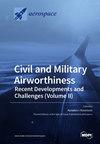前缘半径对旋翼失速特性的影响
IF 2.1
3区 工程技术
Q2 ENGINEERING, AEROSPACE
引用次数: 0
摘要
研究了前缘半径对转子机翼静态和动态失速特性的影响。首先,采用参数机翼(PARFOIL)方法,以 NACA 0012 机翼为基础生成四个具有不同前缘半径的变形机翼。随后,采用雷诺平均纳维-斯托克斯(RANS)方法模拟静态翼面的气动特性,并采用改进的延迟分离涡模拟(IDDES)方法模拟俯仰翼面。数值结果与实验结果的良好一致性证明了计算流体动力学(CFD)方法的有效性和准确性。最后,模拟和分析了具有不同前缘半径的机翼的静态和动态气动特性。对比分析表明,在低马赫数时,前缘附近的高逆压力梯度是导致前缘分离和失速的主要原因。较大的前缘半径有助于降低吸气压力峰值和不利压力梯度,从而延迟机翼前缘分离和失速。在高马赫数下,前缘分离和失速主要由冲击波引起。前缘半径的变化对冲击波引起的高不利压力梯度的影响很小,因此在高马赫数下机翼的失速特性几乎不受影响。本文章由计算机程序翻译,如有差异,请以英文原文为准。
Effects of Leading Edge Radius on Stall Characteristics of Rotor Airfoil
The effects of leading edge radius on the static and dynamic stall characteristics of rotor airfoils are investigated. Initially, a parametric airfoil (PARFOIL) method is employed to generate four morphed airfoils with different leading edge radii based on a NACA 0012 airfoil. Subsequently, the Reynolds-averaged Navier–Stokes (RANS) method is employed to simulate the aerodynamic characteristics of static airfoils, while the improved delayed detached-eddy simulation (IDDES) method is employed for pitching airfoils. The effectiveness and accuracy of the computational fluid dynamics (CFD) methods are demonstrated through favorable agreement between the numerical and experimental results. Finally, both the static and dynamic aerodynamic characteristics are simulated and analyzed for the airfoils with varying leading edge radii. Comparative analyses indicate that at low Mach numbers, the high adverse pressure gradient near the leading edge is the primary cause of leading edge separation and stall. A larger leading edge radius helps to reduce the suction pressure peak and adverse pressure gradients, thus delaying the leading edge separation and stall of airfoil. At high Mach numbers, the leading edge separation and stall are mainly induced by the shock wave. Variations in leading edge radius have minimal impacts on the high adverse pressure gradient induced by the shock wave, thus making the stall characteristics of airfoils almost unaffected at high Mach numbers.
求助全文
通过发布文献求助,成功后即可免费获取论文全文。
去求助
来源期刊

Aerospace
ENGINEERING, AEROSPACE-
CiteScore
3.40
自引率
23.10%
发文量
661
审稿时长
6 weeks
期刊介绍:
Aerospace is a multidisciplinary science inviting submissions on, but not limited to, the following subject areas: aerodynamics computational fluid dynamics fluid-structure interaction flight mechanics plasmas research instrumentation test facilities environment material science structural analysis thermophysics and heat transfer thermal-structure interaction aeroacoustics optics electromagnetism and radar propulsion power generation and conversion fuels and propellants combustion multidisciplinary design optimization software engineering data analysis signal and image processing artificial intelligence aerospace vehicles'' operation, control and maintenance risk and reliability human factors human-automation interaction airline operations and management air traffic management airport design meteorology space exploration multi-physics interaction.
 求助内容:
求助内容: 应助结果提醒方式:
应助结果提醒方式:


